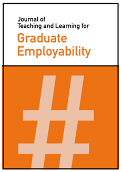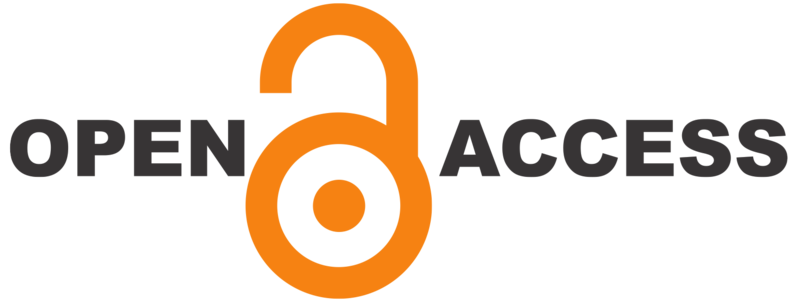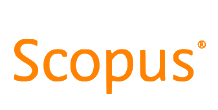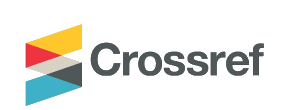VET career pathways for school students living with disability: Working with employers
DOI:
https://doi.org/10.21153/jtlge2023vol14no2art1797Abstract
Research has shown that employers and industry are key partners in work-based learning and can hinder or enhance access to vocational education training (VET). Our capabilities approach focus concerns increasing employer understanding of what is involved in engaging in the work-based component of school-based VET for students with disability. It seeks to identify enhancers and barriers to both employer and student participation in work-based learning in workplaces and strategies to address the barriers. Using a qualitative approach, this interpretive research aims to answer the following principal question: How can employers, students, teachers and other influencers of student education and career pathway choice work together to increase opportunities for successful participation of students with disability in the work-based component of school-based VET? Employers and staff at organisations that support/place school-based VET students with disabilities were interviewed and inductive content analysis was used to code interview transcripts. Findings indicate that while communication and relationships are key factors in ensuring successful work-based learning placements, lack of understanding related to the spectrum of disability can be a barrier. Interview participants also identified workplace and policy barriers. Addressing the implications of our research findings will assist in increasing the willingness of employers to engage in work-based learning for school VET students with disability. This shift in practise has the potential to develop the workforce of the region and create greater breadth of opportunities for work-based learning in the community for school VET students with disability, leading to improved employment outcomes for people with disability.Metrics
References
Atkinson, G. (2016, August 23). Work-based learning and work-integrated learning. National Centre for Vocational Education Research. https://www.ncver.edu.au/research-and-statistics/publications/all-publications/work-based-learning-and-work-integrated-learning-fostering-engagement-with-employers
Australian Bureau of Statistics. (2022a, June 1). Effects of COVID-19 strains on the Australian economy. https://www.abs.gov.au/articles/effects-covid-19-strains-australian-economy
Australian Bureau of Statistics. (2022b). Australian National Accounts: National Income, Expenditure and Product, June 2022. https://www.abs.gov.au/statistics/economy/national-accounts/australian-national-accounts-national-income-expenditure-and-product/jun-2022
Bonaccio, S., Connelly, C. E., Gellatly, I. R., Jetha, A., & Martin Ginis, K. A. (2020). The Participation of People with Disabilities in the Workplace Across the Employment Cycle: Employer Concerns and Research Evidence. Journal of Business and Psychology, 35(2), 135–158. https://doi.org/10.1007/s10869-018-9602-5
Burchardt, T. (2004). Capabilities and disability: The capabilities framework and the social model of disability. Disability & Society, 19(7), 735–751. https://doi.org/10.1080/0968759042000284213
Circelli, M., & Siekmann, G. (2022). VET for secondary school students: A research synthesis. National Centre for Vocational Education Research. https://files.eric.ed.gov/fulltext/ED620406.pdf
Clarke, K. (2014). Entry to vocations: Building the foundations for successful transitions. National Centre for Vocational Education Research. https://files.eric.ed.gov/fulltext/ED550322.pdf
Clarke, K. (2015). Tinkering around the edges, but ignoring the huge cracks: A discussion of VET in Schools for young Australians. Proceedings of 23rd National Vocational Education and Training Research Conference, Australia, 8-15. https://tinyurl.com/2k9udr3y
Department of Education (2020, October 15). Accessible Island: Tasmania’s Disability Framework for Action 2018-2021. Annual Report on Agency Implementation. Tasmanian Government. https://publicdocumentcentre.education.tas.gov.au/library/Shared%20Documents/Disability%20Action%20plan%202018-2021%20-%20Department%20of%20Education.pdf
Ebuenyi, I. D., Rottenburg, E. S., Bunders-Aelen, J. F. G., & Regeer, B. J. (2020). Challenges of inclusion: A qualitative study exploring barriers and pathways to inclusion of persons with mental disabilities in technical and vocational education and training programmes in East Africa. Disability and Rehabilitation, 42(4), 536–544. https://doi.org/10.1080/09638288.2018.1503729
Eckstein, D. (2022, February 23). Meaningful jobs for students with disability From luck to business as usual. National Centre for Student Equity in Higher Education. https://www.ncsehe.edu.au/publications/jobs-students-disability/
Edwards, D., Perkins, K., Pearce, J., & Hong, J. (2015). Work Integrated Learning in STEM in Australian Universities: Final report: Submitted to the Office of the Chief Scientist. Australian Council for Educational Research. https://research.acer.edu.au/higher_education/44/
Firth, J. (2020). Review into vocational and applied learning pathways in senior secondary schooling (Firth review). Victoria Department of Education and Training. https://www.vic.gov.au/review-vocational-and-applied-learning-pathways-senior-secondary-schooling
Jackson, D., Rowbottom, D., Ferns, S., & McLaren, D. (2017). Employer understanding of Work-Integrated Learning and the challenges of engaging in work placement opportunities. Studies in Continuing Education, 39(1), 35–51. https://doi.org/10.1080/0158037X.2016.1228624
Jolly-Ryan, J. (2010). The Last Taboo: Breaking Law Students with Mental Illnesses and Disabilities out of the Stigma Straitjacket. UMKC Law Review, 79(1), 123–162. https://tinyurl.com/52br8e3e
Joyce, S. (2019). Strengthening Skills: Expert Review of Australia’s Vocational Education and Training System (Joyce Review). Commonwealth of Australia, Department of the Prime Minister and Cabinet. https://www.pmc.gov.au/publications/strengthening-skills-expert-review-australias-vocational-education-and-training-system
Kaye, H. S., Jans, L. H., & Jones, E. C. (2011). Why Don’t Employers Hire and Retain Workers with Disabilities? Journal of Occupational Rehabilitation, 21(4), 526–536. https://doi.org/10.1007/s10926-011-9302-8
Kilpatrick, S., & Fischer, S. (2023). VET career pathways for school students living with disability: Working with employers. National Centre for Student Equity in Higher Education.
Kilpatrick, S., Johns, S., Barnes, R., Fischer, S., McLennan, D., & Magnussen, K. (2017). Exploring the retention and success of students with disability in Australian higher education. International Journal of Inclusive Education, 21(7), 747-762. https://doi.org/10.1080/13603116.2016.1251980
Kirmayer, L., & Minas, H. (2000). The Future of Cultural Psychiatry: An International Perspective. The Canadian Journal of Psychiatry, 45(5), 438–446. https://doi.org/10.1177/070674370004500503
Lengnick-Hall, M. L., Gaunt, P. M., & Kulkarni, M. (2008). Overlooked and underutilized: People with disabilities are an untapped human resource. Human Resource Management, 47(2), 255–273. https://doi.org/10.1002/hrm.20211
Misko, J., Korbel, P., & Blomberg, D. (2017, September 1). VET in Schools students—Characteristics and post-school employment and training experiences. National Centre for Vocational Education Research. https://www.ncver.edu.au/research-and-statistics/publications/all-publications/vet-in-schools-students-characteristics-and-post-school-employment-and-training-experiences
National Centre for Vocational Education Research. (2021). Total VET students and courses 2021. https://www.ncver.edu.au/__data/assets/pdf_file/0034/9674107/DPO_Total-VET-students-and-courses-2021-9-8-22.pdf
Nelissen, P. T. J. H., Vornholt, K., Van Ruitenbeek, G. M. C., Hülsheger, U. R., & Uitdewilligen, S. (2014). Disclosure or Nondisclosure—Is This the Question? Industrial and Organizational Psychology, 7(2), 231–235. https://doi.org/10.1111/iops.12138
Nussbaum, M. (2000). Women and human development: The capabilities approach. Cambridge University Press.
Nussbaum, M. (2002). Capabilities and Disabilities: Justice for Mentally Disabled Citizens. Philosophical Topics, 30(2), 133–165. https://www.jstor.org/stable/43154398
Osborne, K. (2021, October 20). Prevalence and outcomes of workplace- based delivery in VET. National Centre for Vocational Education Research. https://www.ncver.edu.au/research-and-statistics/publications/all-publications/prevalence-and-outcomes-of-workplace-based-delivery-in-vet
Osorio, F., & Barbazán, C. (2019). La discapacidad como falacia diagnóstica: Constructos médicos y sociales. Identidad, cuerpo y estigma en las personas con discapacidad. Norte de Salud Mental, 16(61), 22–34.
Pitcher, G. (2020, November 20). Is disability architecture’s final taboo? The Architects’ Journal. https://www.architectsjournal.co.uk/news/is-disability-architectures-final-taboo
Regional Australia Institute. (2022a, August 26). Regional job vacancies reach a new high of 86,900. https://regionalaustralia.org.au/Web/Web/Toolkits-Indexes/Regional-Jobs-Update/Updates/2022/Regional_job_vacancies_reach_a_new_high_of_86,900.aspx
Regional Australia Institute. (2022b). Regional Jobs Vacancy Map. https://regionalaustralia.org.au/Web/Web/Toolkits-Indexes/Regional-Jobs-Vacancy-Map.aspx
Sen, A. (1985). Well-Being, Agency and Freedom: The Dewey Lectures 1984. The Journal of Philosophy, 82(4), 169–221. https://doi.org/10.2307/2026184
Shergold, P., Calma, T., Russo, S., Walton, P., Westacott, J., Zoellner, D., & O’Reilly, P. (2020, July 23). Looking to the Future—Report of the review of senior secondary pathways into work, further education and training. Department of Education, Skills and Employment, Australian Government. https://www.education.gov.au/quality-schools-package/resources/looking-future-report-review-senior-secondary-pathways-work-further-education-and-training
Stone, D. L., & Colella, A. (1996). A Model of Factors Affecting the Treatment of Disabled Individuals in Organizations. The Academy of Management Review, 21(2), 352–401. https://doi.org/10.2307/258666
Thomas, D. R. (2006). A General Inductive Approach for Analyzing Qualitative Evaluation Data. American Journal of Evaluation, 27(2), 237–246. https://doi.org/10.1177/1098214005283748
Thoresen, S. H., Cocks, E., & Parsons, R. (2021). Three Year Longitudinal Study of Graduate Employment Outcomes for Australian Apprentices and Trainees with and without Disabilities. International Journal of Disability, Development and Education, 68(5), 702–716. https://doi.org/10.1080/1034912X.2019.1699648
Tomlinson, M. (2017). Forms of graduate capital and their relationship to graduate employability. Education + Training, 59(4), 338–352. https://doi.org/10.1108/ET-05-2016-0090
United Nations (2006) Convention on the Rights of Persons with Disabilities and Optional Protocol. https://www.un.org/disabilities/documents/convention/convoptprot-e.pdf
Wynne Bannister, E., & Venkatapuram, S. (2020). Grounding the right to live in the community (CRPD Article 19) in the capabilities approach to social justice. International Journal of Law and Psychiatry, 69. https://doi.org/10.1016/j.ijlp.2020.101551
Downloads
Published
Issue
Section
License
Copyright (c) 2023 Sarah Fischer, Sue Kilpatrick

This work is licensed under a Creative Commons Attribution-NonCommercial 4.0 International License.












